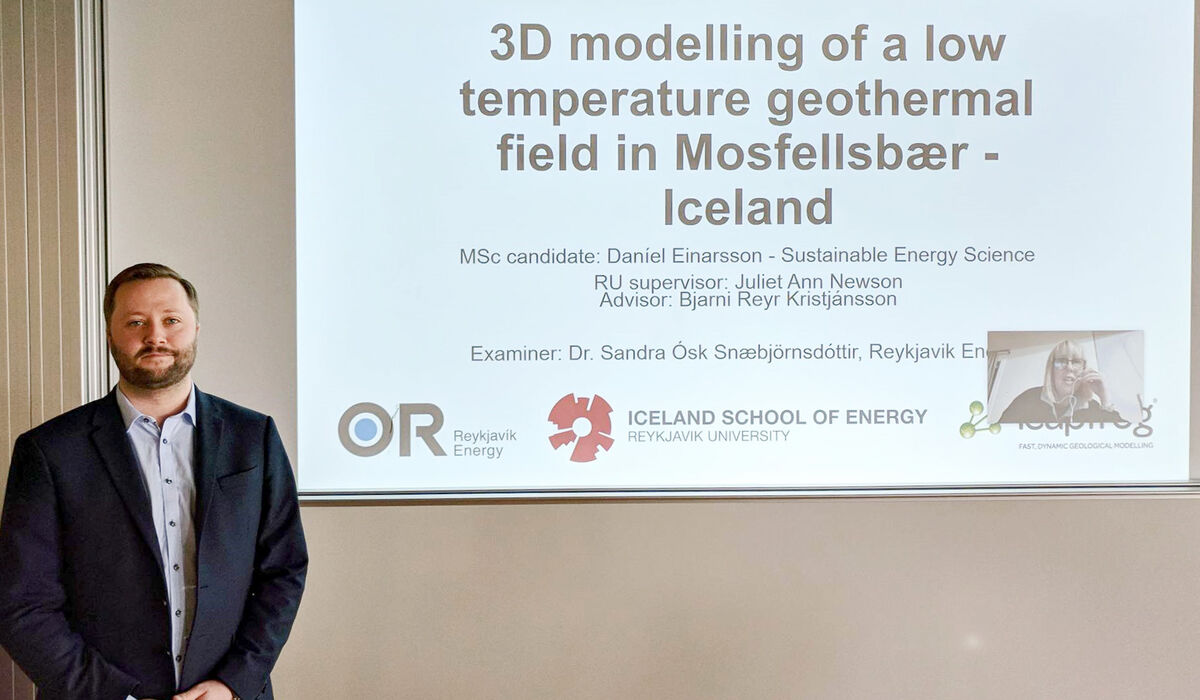MSc Thesis: 3D modelling of the Reykir geothermal areas in Mosfellssveit, Iceland
Daníel Einarsson successfully defends his master's thesis
REYKJAVIK, JULY 16 - On the 31th of May, Daníel Einarsson , MSc in Sustainable Energy Engineering, successfully defended his master's thesis research where he created a 3D model of the Reykir geothermal areas in Mossfellssveit using Leapfrog Geothermal modelling software that depicts lithological and thermal information of the area and can act as a digital platform for future resource management. Daníel's work was supervised by Juliet Ann Newson from Háskólinn í Reykjavík and advised by Bjarni Reyr Kristjánsson from Reykjavik Energy.

Before delving into the specifics of his research, Daniel overviewed the geology and geothermal potential in Iceland. He focused his study on low-temperature geothermal resources in the southwestern part of Iceland, more specifically, the Reykir geothermal areas. The Reykir areas refer to both Reykir and Reykjahlíð and they make up the bulk of Reykjavik Energy's district heating resource. The are has been well documented but as the data is in its original format, which is a standardized digital form, but it is only a two-dimensional depiction
Daniel used Leapfrog Geothermal, a software widely used in mining and geothermal industries to create a stratigraphic model, a rock temperature model (that used the Radial Basis Functions or RBF) interpolant in Leapfrog, a hydrothermal alteration model, and a geochemical data presentation that depicts the silica concentration in various locations.
Daniel validated his findings against the previously available 2D data and by creating a 3D model has proven older data can be digitized and be compiled to a more comprehensive and useful format. His work can be carried out further to the rest of the greater Reykjavik area as there is enough original data to create 3D renditions.
To read more about how one can make more use of geothermal data read more here.
Congratulations, Daníel on an excellent thesis!
